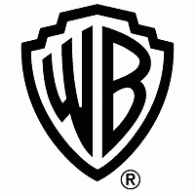
Last month The Archivist celebrated its 100th edition, collecting some favorite team picks to mark the occasion. Meanwhile next month, the Warner Archive Collection celebrates a huge milestone — its 10th Anniversary!
For this 101st edition, we thought we’d turn back the dial a bit and just discuss some of the basics of why we love the Warner Archive Collection and its unique approach. It’s been a few years since Jacob Knight originally created the column, and WA and the column have evolved.
Welcome to The Archivist 101.
Probably more than any other studio, Warner Bros. has really stepped in the last decade or so to preserve and release their vast catalogue on Blu-ray and DVD on a primarily in-house basis. As boutique distributors become a bigger force in the physical media landscape, some studios have given up on handling their own releases in favor of licensing their catalogues out to Kino Lorber, Shout Factory, Arrow, Olive Films, Criterion, and so on.
MOD DVD
The Warner Archive Collection began in 2009 as a unique manufacture-on-demand (MOD) service, mining their deep library of films which include not only movies originally released and distributed by Warner Bros, but also others that they have acquired over the years. By burning (rather than traditionally pressing) DVDs, WA could avoid costly and risky large-volume manufacturing, suddenly opening up a huge potential for left-of-mainstream films to make their way to DVD, many hitting home video for the first time ever. The floodgates opened for decades’ worth of cult and niche films, lesser known oddities, panned duds, ephemeral television movies and pilots, and all manner of amazing movies, previously difficult or impossible to find and watch, now available to own.

Blu-ray
In 2012, WA made their most significant evolution, expanding to Blu-ray. Unlike their DVD production, WA Blu-rays are factory-pressed in small runs. Their expansion of Blu-ray has largely coincided with the market’s general downshift on physical media as Best Buy and Walmart devote less and less of their shelf space to movies. This combination of factors has shifted WA’s Blu-ray model away from the original MOD DVD strategy, bringing higher profile movies to Blu-ray under the Warner Archive label and upgrading popular DVD selections to the format. And whereas the MOD model initially focused on making as much of Warner’s library available as possible on a no-frills basis, these days there’s much more focus on quality restorations and bonus materials. On Blu-ray, Warner Archive has mined a parade of favorites and classics, with major films from heavy hitters like Peckinpah, Hitchcock, Bogart & Bacall, and beloved brands like DC and Hammer Horror, in their lineup.

Re-releases
Another interesting development at WA is their expansion to re-releasing rare or out of print titles on MOD DVD under the Warner Archive banner, sometimes even using the opportunity to make corrections to undesirable aspects of the original releases. Burt Reynolds films Hooper, Stroker Ace, and Sharky’s Machine, for example, were previously only available on 4:3 full-screen DVDs, but WA’s re-releases put them in the correct aspect ratios. (Another potential benefit? Standard cases, for those who hate WB’s old cardboard digipacks).

Warner Archive Podcast
On each episode of the Warner Archive Podcast, hosts George Feltenstein, Matthew Patterson, and D.W. Ferranti discuss the label’s newest releases and answer listeners’ letters and questions. The podcast is pretty enlightening, as the knowledgeable hosts not only talk movies, but go deep on Warner Bros history, discuss transfers and restorations in detail, and even talk about challenges with rights and licensing issues. More than simply a long-form advertisement for new DVDs and Blu-rays, this is great listening for anyone with an interest in film history or home video production.
https://itunes.apple.com/us/podcast/warner-archive-podcast/id310063354
Streaming & Digital, and Looking Forward
Many Warner Bros archival titles are available digitally on VOD platforms, which is frankly a great medium for the kind of films that initiated the original MOD model — movies of niche appeal. I’m a major physical media supporter, but if a movie is only available in standard definition with no extras — there’s really no persuasive upside to owning it physically.
A question that looms is how the Collection will return to steaming. For awhile, there was a Warner Archive streaming channel which eventually was set aside in favor of Filmstruck. WarnerMedia shocked the film community by shutting that service down (and without having a replacement ready, no less). From what I’ve read, we might expect something by the end of the year, but we’ve yet to see what form this will take.
Content providers seem to be in a race to develop their own streaming platforms, but this fragmentation of content is increasingly becoming a nuisance to consumers who can’t be bothered to pay separate monthly fees for Netflix, Amazon Prime, Hulu, Shudder, CBS All Access, Criterion Channel, and whatever the hell Disney is cooking up. Remember when cutting the cord was supposed to be cheaper than paying for cable?
Let’s hope that WarnerMedia understands this and ultimately puts the consumer first. If they can come up with something as radical, film-friendly, customer-focused, and consistently high-quality and as Warner Archive Collection has been, then we’ll be in good shape.
Oh, and bring on the 4K discs already.

A/V Out.
https://itunes.apple.com/us/podcast/warner-archive-podcast/id310063354


